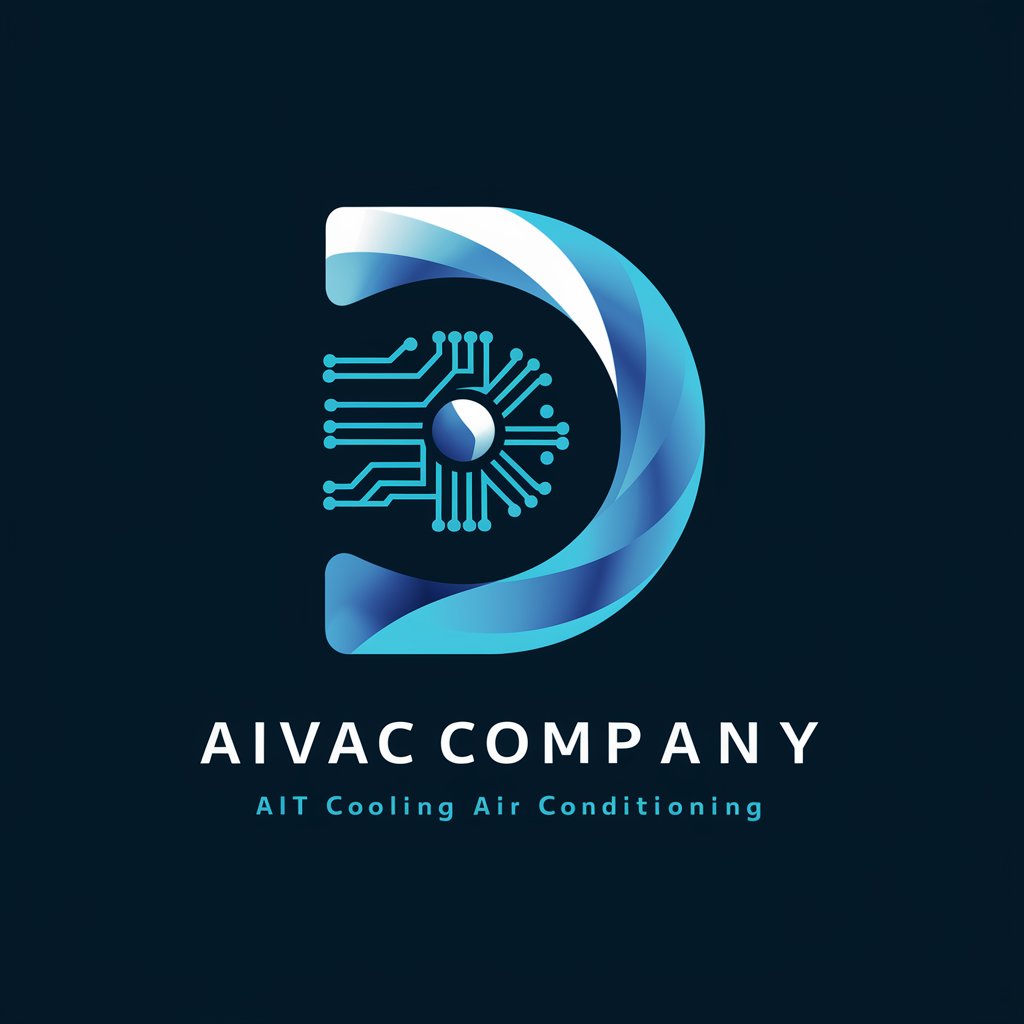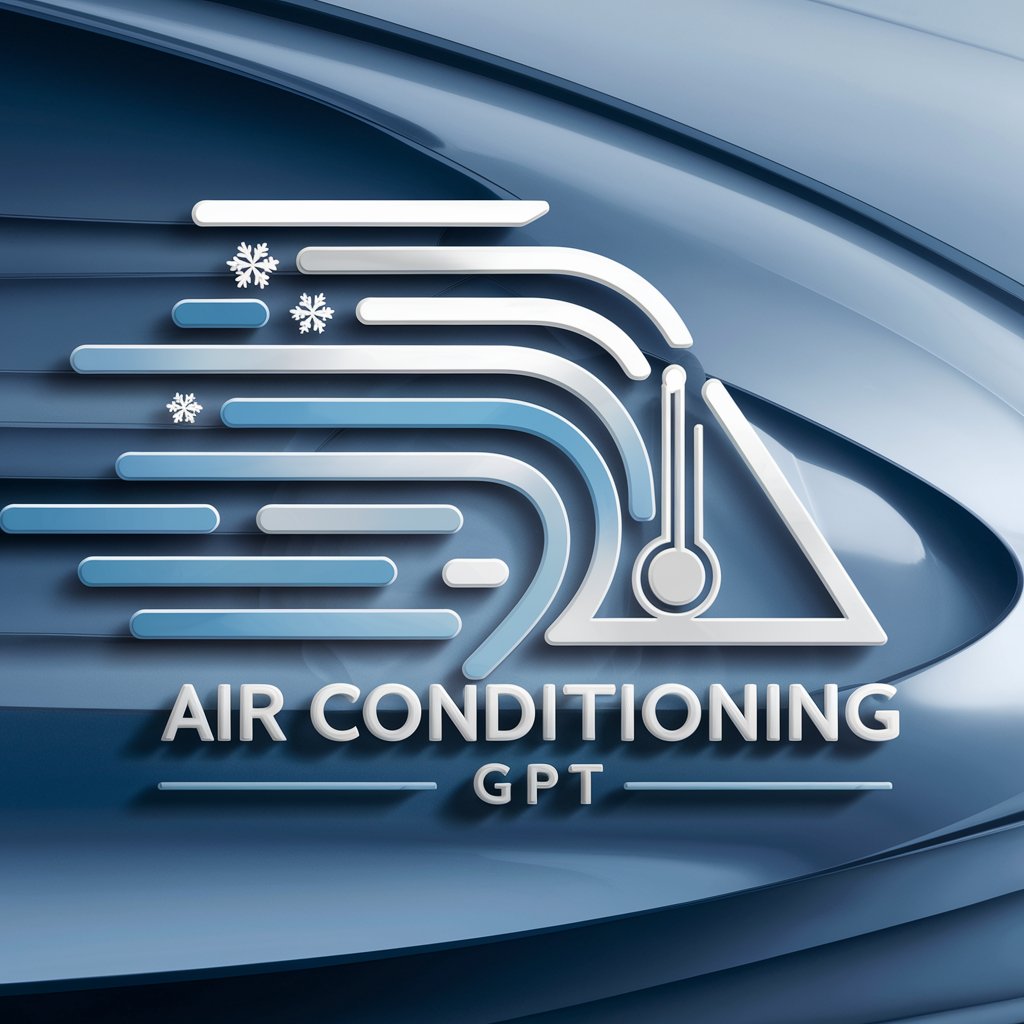AC - Efficient Climate Control

Welcome! How can I assist with your cooling system inquiries today?
Optimize your climate, effortlessly.
Explain the differences between various types of air conditioning systems.
Describe the energy efficiency measures for modern cooling systems.
What are the benefits of using smart thermostats in residential cooling?
Discuss the latest advancements in HVAC technology.
Get Embed Code
Introduction to Air Conditioning Systems
Air conditioning (AC) systems are designed to control the temperature, humidity, and air quality within indoor spaces, making environments more comfortable and livable. Fundamentally, AC systems operate by removing heat and moisture from the air inside a space and releasing it outside, thus cooling and dehumidifying the air indoors. They consist of key components such as a compressor, condenser, expansion valve, and evaporator. AC systems can vary from small, portable units suitable for single rooms to large, centralized systems designed for entire buildings. Examples of AC application include residential homes for comfort, data centers to control equipment temperature, and hospitals to ensure a sterile environment. These systems not only improve comfort but can also protect equipment from overheating and reduce the risk of heat-related illnesses. Powered by ChatGPT-4o。

Main Functions of Air Conditioning Systems
Temperature Control
Example
Maintaining a comfortable indoor environment in residential and commercial buildings.
Scenario
In hot climates, AC systems lower the indoor temperature to a comfortable level, enhancing living and working conditions. For instance, in office buildings, they help maintain a temperature conducive to productivity and comfort.
Humidity Reduction
Example
Preventing mold growth and ensuring comfort in humid climates.
Scenario
AC units extract excess moisture from the air, which is particularly beneficial in humid regions. This prevents mold growth, protects building materials and furnishings, and increases comfort levels.
Air Filtration
Example
Improving indoor air quality by removing pollutants.
Scenario
AC systems often include filters that trap dust, pollen, and other airborne contaminants. This feature is crucial in environments like hospitals and manufacturing facilities, where clean air is essential for health and product quality.
Energy Efficiency
Example
Reducing energy consumption through advanced technologies.
Scenario
Modern AC systems incorporate energy-efficient technologies such as inverter technology and programmable thermostats. These features allow for significant energy savings in homes and commercial buildings by adjusting cooling based on demand.
Ideal Users of Air Conditioning Services
Residential Users
Individuals and families living in regions with extreme temperature variations benefit from AC to maintain a comfortable living environment year-round.
Commercial and Industrial Users
Businesses, factories, and data centers require AC to protect equipment, maintain product quality, and provide a comfortable working environment, leading to increased productivity and equipment longevity.
Healthcare Facilities
Hospitals and clinics use AC systems to control temperature and humidity, crucial for patient comfort, reducing the spread of infections, and preserving medications and medical equipment.

How to Use AC
Start with a Free Trial
Begin by accessing a no-cost trial without needing to log in or subscribe to ChatGPT Plus at yeschat.ai.
Identify Your Needs
Determine the specific cooling or temperature control requirements you have, including room size, climate, and personal preferences.
Select the Right Mode
Choose the appropriate mode for your needs, such as cooling, dehumidifying, or fan only, to ensure efficient operation.
Adjust Settings
Fine-tune the temperature settings, fan speed, and timer according to your comfort level and energy efficiency goals.
Regular Maintenance
Ensure optimal performance by cleaning or replacing filters regularly and scheduling professional maintenance checks.
Try other advanced and practical GPTs
Test
Optimize with AI-Powered Insights

nestWay
Streamlining Construction with AI

Teguiden - Teentusiasten
Explore the world of tea with AI-powered guidance.

Travel Zmart
Crafting Unique Journeys with AI

Barsebäck
Empower Your Work with AI

Supernormal™ - Copywriter
Elevate Male Health Branding with AI

Air Conditioning
Optimize your comfort with AI-powered cooling advice.

Branding AC
Elevate Your Association's Voice with AI

Cooling
Optimize your climate with AI-powered cooling intelligence.

Ad Copy Wizard
Crafting Persuasive Ads with AI Power

Ad Campaign Assistant
Empower Your Marketing with AI

Ad Wizard
Empowering Ads with AI Precision

AC Usage and Functionality Q&A
What factors should I consider when setting my AC temperature?
Consider factors such as outdoor climate, indoor humidity levels, personal comfort preferences, and energy efficiency goals to set an optimal temperature.
How can I improve my AC's energy efficiency?
Improve efficiency by using programmable thermostats, maintaining regular service, sealing leaks in ducts, insulating your home, and using energy-efficient modes.
What maintenance tasks are essential for AC units?
Essential maintenance includes cleaning or replacing air filters every 1-3 months, checking refrigerant levels, cleaning coils, and ensuring ducts are not obstructed.
Can I use my AC for heating as well as cooling?
Yes, many modern AC units come with a heat pump function, allowing them to provide heating in addition to cooling by reversing the refrigeration cycle.
How does dehumidifying mode differ from cooling mode?
Dehumidifying mode removes moisture from the air without significantly reducing the temperature, making it ideal for humid but not necessarily hot conditions.
